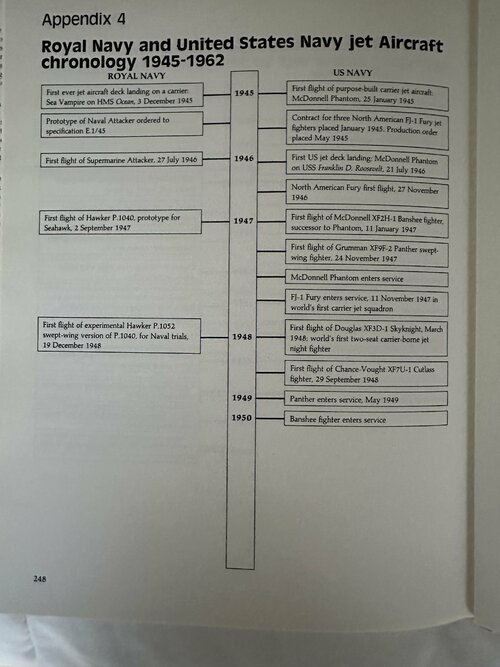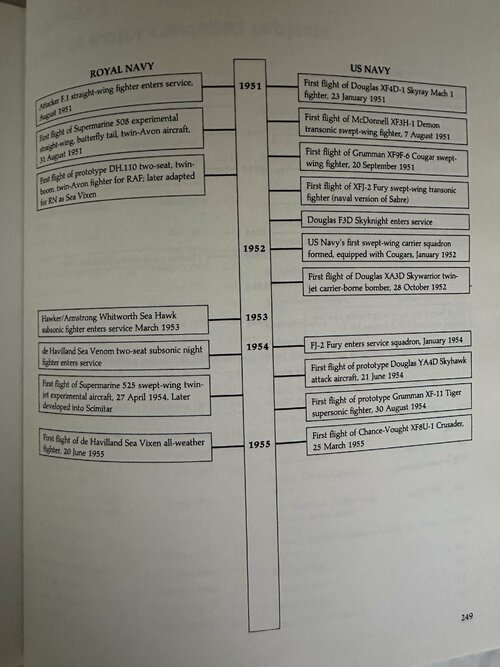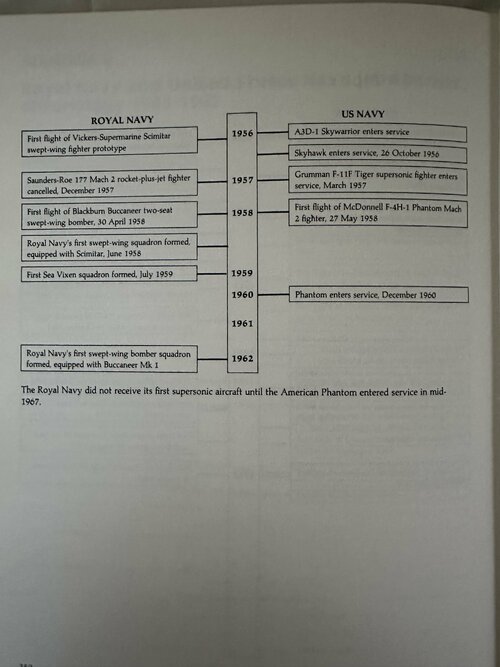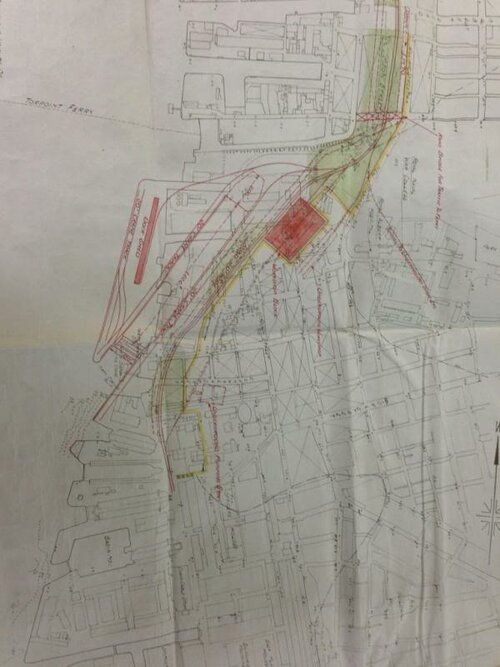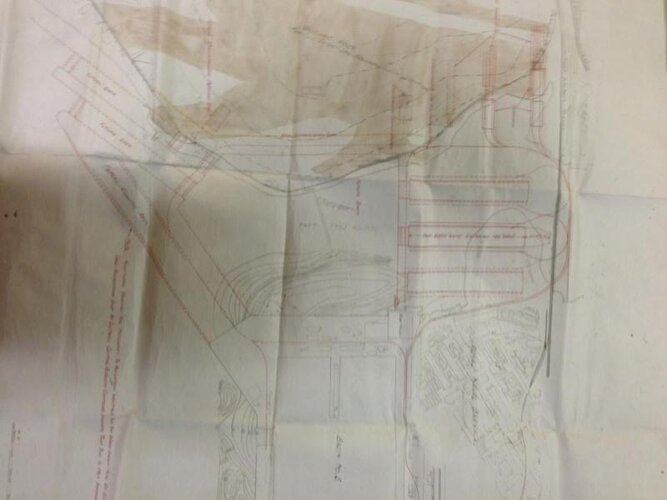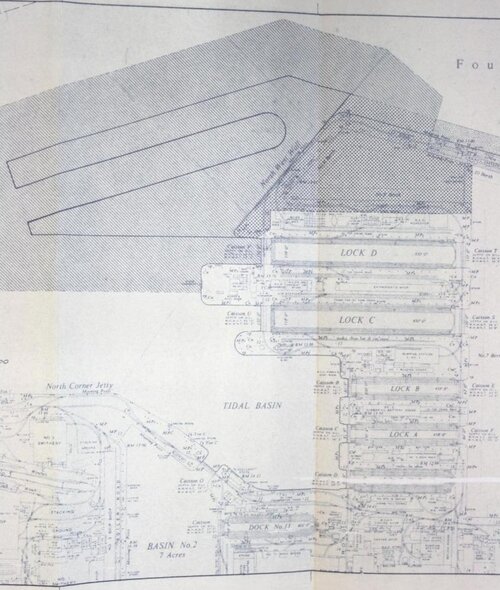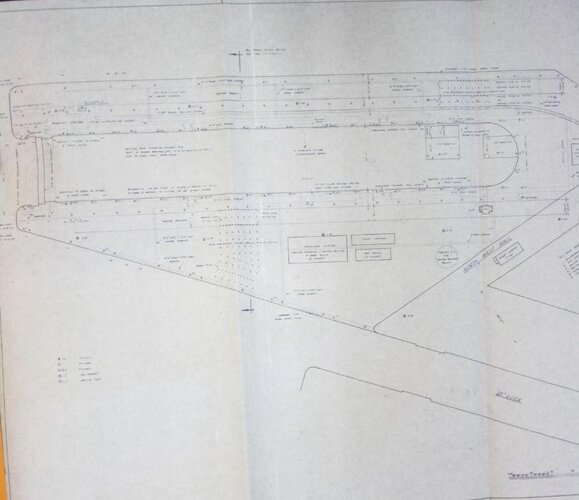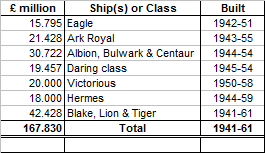NOMISYRRUC
ACCESS: Top Secret
- Joined
- 28 September 2008
- Messages
- 1,608
- Reaction score
- 2,377
I'm spinning this off into a separate thread because the existing thread is following many lines of enquiry, which include (but may not be limited too) prolonging the life of the Audacious & Centaur classes, building the CVA.01 class, building some 1952 Large Aircraft Carriers or 1954 Medium Aircraft Carriers, building a better Invincible class and several about carrier aircraft.Link to Post 291 of the thread "Could the UK have done a better job of maintaining carrier based air power?"
This thread exists in the same fictional universe as the several "Could the UK have done a better job of maintaining its aerospace industry" threads (started by me) as the two are closely related.
***** ***** ***** ***** ***** *****
This is the text of Post 291 from the thread
"Could the UK have done a better job of maintaining carrier based air power?"
"Could the UK have done a better job of maintaining carrier based air power?"
Argus class Aircraft Carrier HMS Glorious
It became so big that I'm spinning it off Alternative Warships of Nations into its own thread...
www.alternatehistory.com
An even more austere Austerity Era forced the cancellation of the entire Audacious class, the entire Centaur class and the entire Tiger class. However, as a sop the Admiralty was allowed to complete Hercules and Leviathan by 1948.
Plans to fully modernise the Illustrious class were abandoned by 1948 in favour of 6 new carriers that would be ready in time for the "Year of Maximum Danger". However, the Illustrious & Colossus/Majestic classes would be refitted to operate 30,000lb aircraft. This looked affordable to the Admiralty of 1948 because the economy was on the mend. For example the personnel cuts of the late 1940s were avoided so there was no need to lay up the King George V class battleships 1949-50 and downgrade Vanguard to a training ship in 1949.
Four 35,000 ton carriers were built in the HMS Glorious thread and five or six 1952 Carriers were laid down from 1950 in this timeline and completed 1955-61. They would take the names of the first 5 or 6 RN aircraft carriers. That is Argus, Courageous, Eagle, Furious, Glorious and the sixth if built would be called Hermes.
All would be built with a pair of BS.4 steam catapults with a stroke of at least 199ft (and preferably 250ft) and a fully angled flight deck. It might not be possible to complete the first ships with the Type 984 radar, CDS & DPT and if that was the case they were fitted with the Type 984M radar, ADA & DPT during their first major refits. The reason why they were all completed with fully angled flight decks was that that someone had the idea four years earlier.
They also had a modern torpedo defence system, AC electrical systems (which Ark Royal, Centaur & Eagle didn't) and modern accommodation for the crew. The latter may have helped the RN recruit and retain more men over the coming years.
Due to the theory that "steel is cheap and air is free" they don't cost 50% more to build than the 35,000ton design and some of the money used to build the fifth ship came from what was spent on Albion, Ark Royal, Bulwark, Centaur and Eagle 1950-55 in the "Real World".
The 5 or 6 ships built form a homogenous class with hulls and machinery that should have had at least 20 years of life in them & even more if they had SLEP refits like the contemporary American super carriers. Therefore, a replacement class wasn't required until 1975 at the earliest. Furthermore, unlike the 5 strike carriers that the RN had in 1960 in the "Real World" these ships were capable of being made to operate the Buccaneer and Phantom at a price the British taxpayer could afford.
However, the other defence cuts of 1965-70 still happen and so the number of ships is reduced from 5 or 6 to 3 between 1965 and 1975 with one of the 3 surviving ships always in refit or reserve. Personnel constraints also mean that they couldn't be given full strength air groups either. The two active ships only had 1970s Ark Royal size air groups in peace which would be enlarged in war by breaking up the training squadrons.
There weren't any Centaur class ships to convert into commando carriers in this "Version of History" so Hercules, Leviathan and possibly Magnificent were converted in their place.
***** ***** ***** ***** ***** *****
The above was refined in Post 299
There were now 6 ships built in two groups of 3 ships.
- Long-lead items the first trio of ships (Argus, ALT-Eagle & ALT-Hermes) were ordered in 1948.
- The ships themselves were ordered in 1949 and laid down in 1950.
- Argus & ALT-Eagle (which took the place of the Real-Ark Royal & Eagle) were completed in 1955 to Standard B.
- ALT-Hermes (which took the place of the rebuilt Victorious) was completed to Standard A in 1958.
- The second trio (Courageous, Furious & Glorious) were ordered in 1951 as part of the Rearmament Programme.
- However, they weren't laid down until 1954 and were completed 1959-61 to Standard A.
- The completion of Furious in 1960 allowed Argus to be brought to Standard A in a refit that began in 1960
- The completion of Glorious in 1961 allowed ALT-Eagle to be brought to Standard A in a refit that began in 1961.
The quartet of ships in commission operate air groups of about 40 aircraft which consisted of 12 fighters, 14 strike aircraft, 5 Gannets for AEW & COD and 9 helicopters for ASW, SAR & Vetrep. These were considerably less than the capacity of the ships but it was more than the 3 or 4 ships that were operational IOTL carried. Furthermore, in an emergency they could be reinforced by transferring aircraft from between carriers or by breaking up the training squadrons. Both were something that was done in IOTL and would also be done ITTL.
Last edited:

